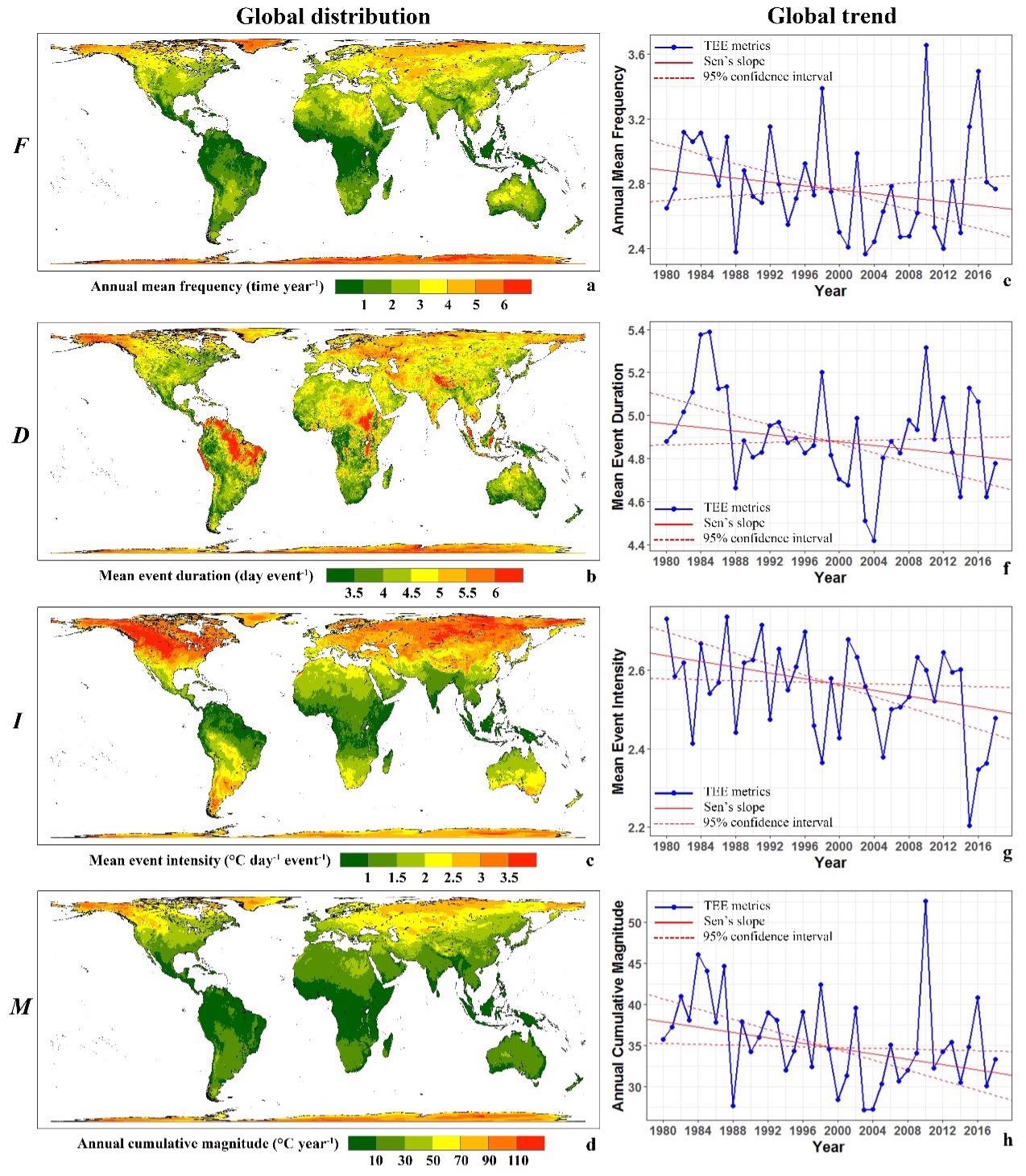Reviewed by Alex SmithApr 12 2022
One of the most dangerous effects of global warming is temperature extremes with modified characteristics. However, it is unclear how their characteristics have changed, and it varies by region.
 Global distribution and trends of annual mean frequency (F), mean event duration (D), mean event intensity (I), and annual cumulative magnitude (M) for all identified Temperature Extreme Events (TEEs). Image Credit: Aerospace Information Research Institute.
Global distribution and trends of annual mean frequency (F), mean event duration (D), mean event intensity (I), and annual cumulative magnitude (M) for all identified Temperature Extreme Events (TEEs). Image Credit: Aerospace Information Research Institute.
For the first time, research headed by Professor Qiangzi Li of the Chinese Academy of Sciences’ (CAS) Aerospace Information Research Institute (AIR) provided a picturesque view of global patterns and trends of Temperature Extreme Events (TEEs) including both cold and heat extremes, heat vs. cold extremes and compound TEEs.
The observations were published on April 1st, 2022, in the Communications Earth & Environment journal.
From 1980 to 2018, the team developed a comprehensive analytical framework to define and measure single and compound TEEs, as well as to examine the Spatio-temporal patterns and trends of their annual mean event duration, mean frequency, mean event intensity and annual cumulative magnitude at grid cell, regional and global scales.
They discovered that, on average, the magnitude of heat extremes increased by 3.06 °C decade-1 while the magnitude of cold extremes decreased by −4.76 °C decade-1 over the study period. As a result, the world had rapidly and steadily shifted from a cold-extreme- to a heat-extreme-dominated climate.
TEEs have become substantially milder globally, with a reduced rate of −1.63 °C decade-1, due to a faster decrease in cold extremes than an increase in heat extremes, contrary to popular belief. The compound percentage had decreased by 0.87% per decade, which was a small but significant decrease.
Overall, these patterns were not consistent across the globe. North Africa and the Middle East, including the Mediterranean region, stood out as a hotspot of climate change, with rapid and significant increases in heat extremes and decreases in cold extremes.
Different patterns and trends have been identified among climate zones as a result of global heterogeneity, with the Tropical and Polar zones being the most notable.
Due to the rapid percentage changes in both heat and cold extremes in magnitude, the transition to a heat-extreme-dominated climate regime occurred most quickly in the Tropical zone.
The tropics were also linked to the fastest increase in compound TEE percentage. In contrast to global trends, TEEs in the Tropical zone had become slightly more extreme overall, though not significantly. TEEs, on the other hand, had become noticeably milder, and the Polar zone’s climate regime shift was the slowest due to the lowest percentage changes in heat and cold extremes.
In the Polar zone, the globally dominant trend of increasing heat extremes and decreasing cold extremes was the least common, accounting for only 55% of the total, compared to over 80% in other climate zones.
Improved knowledge of global and regional TEE patterns and trends can lead to new insights that can help support more targeted, effective and localized climate change adaptation.
Journal Reference:
Zhang, Y., et al. (2022) Growing prevalence of heat over cold extremes with overall milder extremes and multiple successive events. Communications Earth & Environment. doi.org/10.1038/s43247-022-00404-x.